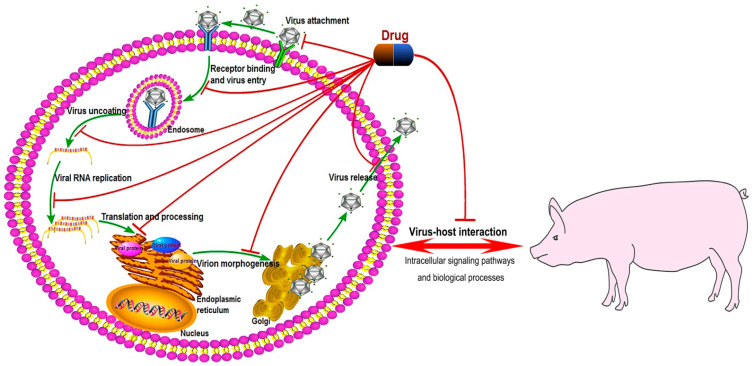Figure 2.
Anti-CSFV drug candidates target the CSFV life cycle or virus-host interaction. The schematic diagram of the CSFV life cycle in Figure 2 referred to the previous literature reported by Li et al. [95] with some modifications. Pathway Builder Tool 2.0 was used to draw the schematic diagram of the CSFV life cycle. Anti-CSFV molecules could target the CSFV life cycle including virus attachment, receptor binding and virus entry, virus uncoating, viral RNA replication, translation and processing of viral proteins, virion morphogenesis, and virus release. Anti-CSFV molecules could also target the intracellular signaling pathways or biological processes related to CSFV infection and replication, such as type I IFN signaling pathway, NF-κB signaling pathway, RIG-I-like signaling pathway, ubiquitin-proteasome system, TLRs signaling pathway, MAPK signaling pathways, autophagy, apoptosis, and metabolism and transport of lipids.

